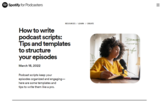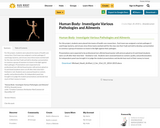
7 Short videos from Clever Academy will walk you through what you need to know to get started with Clever (about 16 minutes total).
- Subject:
- Education
- Material Type:
- Primary Source
- Author:
- Clever Academy
- Clever
- Date Added:
- 08/26/2020

7 Short videos from Clever Academy will walk you through what you need to know to get started with Clever (about 16 minutes total).

A short video on how to use a voltmeter.

An interactive applet and associated web page that provide step-by-step animated instructions on how to measure angles using a protractor. Specifically, it uses a protractor to measure two angles that form a vertical pair, verifying they have the same measure. The animation can be run either continuously like a video, or single stepped to allow classroom discussion and thought between steps. Applet can be enlarged to full screen size for use with a classroom projector. This resource is a component of the Math Open Reference Interactive Geometry textbook project at http://www.mathopenref.com.

An interactive applet and associated web page that provide step-by-step animated instructions on how to use a protractor to draw an angle. The animation can be run either continuously like a video, or single stepped to allow classroom discussion and thought between steps. Applet can be enlarged to full screen size for use with a classroom projector. This resource is a component of the Math Open Reference Interactive Geometry textbook project at http://www.mathopenref.com.

A step-by-step tutorial on how to use new Breakout Rooms in Microsoft Teams meetings. Use Teams Breakout Rooms to partition and organize your meetings more effectively. Learn how to create, rename, join, start and close Breakout Rooms in Teams plus lots more. I show the Microsoft Teams Breakout Rooms experience from both the organizer side and the attendee perspective.

Chromebooks have a built-in screen reader called ChromeVox, which enables people with visual impairments to use the Chrome operating system.

Podcast scripts keep your episodes organized and engaging—
here are some templates and tips to write them like a pro.

This site offers views from the Hubble Telescope.

A 5 page activity booklet consisting of coloring pages, connect the dots, word find, word jumble and word decoder.

This art history video discussion looks at Jan (and Hubert?) Van Eyck's "Ghent Altarpiece or The Adoration of the Mystic Lamb", tempera and oil on panel, (closed panels), Cathedral of Saint Bavo, Ghent, Belgium, completed 1432. Second Life correspondents Max Newbold and Sez Zabelin, discuss the closed Ghent Altarpiece (see the next video for a discussion of the open altarpiece) on the Vassar campus in Second Life.

This art history video is the second part of the discussion about Jan (and Hubert?) Van Eyck's "Ghent Altarpiece or The Adoration of the Mystic Lamb", tempera and oil on panel, (open panels), Cathedral of Saint Bavo, Ghent, Belgium, completed 1432.

There’s a “huge labour shortage” in the Australian agriculture industry which ranges from skilled to short-term workers according to National Farmers Federat...

For this project, students were placed into teams of health care researchers. Each team was assigned a certain pathogen (I used fungi, bacteria, and viruses since three teams worked well for the class size that I had) and told to develop a presentation to convince a group of investors to invest in the fight against their pathogen.
Presentations were expected to be professional (not a Bristol board poster with pictures glued on it) and timed (students were cut off after their time limit – finished or not). Students were assessed based on content, quality, and professionalism. An independent panel was brought in to judge the student presentations and decide how much of their money to invest.

This activity was designed for blind learners, but all types of learners can use it to learn how the body self-regulates. This lesson plan teaches students how the human body self-regulates to maintain a stable internal environment despite changes in the external environment -- a process called homeostasis. Most of the activities detailed in this lesson plan can be done with visually impaired students if teachers adapt them using Resources for Teaching and Adapting Lessons for Students with Visual Impairments.

Lessons describe key functions of the human body systems.
(Sun West - this site will work automatically if you are in a school. You will require a username and password if accessing this off site. Refer to the "Accessing Resources at Sun West" document for this information.)

The first video in our Cell Biology Lecture, part of our Anatomy and Physiology lecture series.
This video introduces us to both cell biology and cell theory. To see the rest of our series please be sure to check out http://www.mrfordsclass.net

Our second video from the cell biology lesson, part of our anatomy and physiology lecture series.
This video gives a brief summary of the differences between eukaryotes and prokaryotes.
All of our videos can be found at http://www.mrfordsclass.net
The concepts covered in this video include:
•Eukaryotes
•Prokaryotes

Our third video from the cell biology lesson, part of our anatomy and physiology lecture series. This video introduces us to the study of the cell and the cell's components.
Some video footage was taken at the Texas Renaissance Festival: http://texrenfest.com/
Some music provided by Free Early Renaissance Music: http://www.jsayles.com/familypages/earlymusic.htm
All of our videos can be found at http://www.mrfordsclass.net

In the media and in the classroom, much emphasis has been placed on India's stunning economic growth since the 1990s. Less attention has been paid, however, to the consequences of the country's rapid industrialization on the nation's people and natural environment. Like many other developing societies throughout history, India's economic progress has resulted in environmental degradation, natural resource depletion, and increased consumption and waste, thereby threatening people's health, access to resources, and traditional ways of life. Using case studies on pollution in the Ganges River, coal mining in Jharkhand, and data comparing the country's total and per capita energy consumption, this cluster explores, and places within a global context, the pressing environmental and human challenges brought by India's industrialization.

These activities for ages 11-16 explore the human impact of the climate emergency and provide new spaces, approaches and opportunities for climate education and social action.
This resource frames the climate emergency as a human rights and people-centered issue and supports teachers to promote a sense of agency and empowerment within young people.
This in turn is recognized as one strategy to help young people manage eco-anxiety, as well as disillusionment and disengagement with climate issues.
The resource includes five activities:
Activity 1 - Climate change, human rights and equality - An activity to introduce the links between climate change and human rights
Activity 2 - Climate justice - A mystery activity to demonstrate the inequalities inherent in the global interconnectedness of climate change. All people are affected in some way by the climate emergency but who you are and where you are in the world matters
Activity 3 – Critically thinking about evidence -An activity to examine case study films and make conclusions about which human rights are most threatened by climate change, which groups in society are most affected and what the solutions are.
Activity 4 – A climate consequences wheel - A consequences wheel activity using evidence from one case study film to make inferences about the different impacts of climate change on members of a community with different personal characteristics (for example: male or female).
Activity 5 – The climate game - A role play activity for which a clear space, either indoors or outdoors, is required. Learners compare the impacts of climate change on people from different backgrounds and in different circumstances. For some participants, the impacts of climate change overlap and are amplified. This strengthens learners’ understanding of intersectionality (interconnectedness).